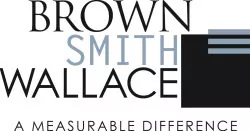Earlier this year, the Department of Health and Human Services (HHS) released proposed regulations that include health coverage benefit and payment parameters for 2018. This mixed bag of proposed rules is largely aimed at insurers, including an emphasis on risk adjustment and actuarial value methodology. There are some proposals that may be of interest to employers and their advisors — particularly regarding certain aspects of the Affordable Care Act.
Limits and Coverage
The agency is looking to increase annual cost-sharing limits. Specifically, the HHS has proposed an increase in the maximum annual limitation on cost-sharing for 2018 to $7,350 for individual coverage and $14,700 for family coverage (compared to $7,150 and $14,300, respectively, for 2017).
It's also suggesting a new level of high-deductible health plan (HDHP) coverage. For 2018, the HHS has proposed a Health Insurance Marketplace (also known as "an exchange") standardized plan option at the bronze level of coverage that qualifies as a Health Savings Account eligible HDHP.
SHOP Enrollment Rules
The HHS has proposed that Small Business Health Options Programs (SHOPs) provide a 30-day enrollment period to any employee who becomes a qualified employee outside of the initial or annual open enrollment period. This period would begin on the date the qualified employer notifies the SHOP about the newly qualified employee. The purpose of this proposal is to ensure that newly qualified employees have a full 30 days to enroll.
Qualified employers would be required to notify the SHOP about a newly qualified employee on or before the 30th day after the day that the employee becomes eligible for coverage. For federal SHOPs, the coverage effective date for a newly qualified employee would be the first day of the month following the plan selection, unless the employee is subject to a waiting period. Waiting periods in SHOPs couldn't exceed 60 days, calculated beginning on the date the employee becomes eligible, regardless of when the qualified employer notifies the SHOP about the newly qualified employee.
Retooled Insurance Market Rules
A number of provisions would clarify and revise insurance market requirements. For example, in the small group market, revised age-rating bands are proposed for children for 2018 — one age band for individuals ages 0 through 14, and single-year age bands for individuals ages 15 through 20. And revisions to the guaranteed renewability rules would reduce instances where certain insurers inadvertently trigger a five-year prohibition on re-entering a market.
In addition, the HHS is proposing an expansion to the medical loss ratio (MLR) rules beginning in 2018. The changes would permit insurers to defer reporting of policies newly issued with a full 12 months of experience in that MLR reporting year. They could also defer reporting of policies newly issued with less than 12 months of experience (as allowed under previous rules). Insurers could limit their total MLR rebate liability payable for a calendar year in certain situations, too.
Additional HHS proposals look to further shore up the risk adjustment program. For example, the agency has suggested incorporating adjustments for partial-year enrollments, using prescription drug utilization data and reining in special enrollment periods to prevent abuse while still encouraging enrollment.
Changes to the Landscape
There are a wide range of rules addressed in these proposals. The agency provided copious detail in the preamble about alternatives it had considered, which may be useful for stakeholders wanting to provide comments. Indeed, the HHS has asked for comments on many ideas for future guidance — including the possibility of eliminating a requirement "tying" an insurer's participation in the federal SHOP to its participation in the federal Health Insurance Marketplace, and doing away with online enrollment in the federal SHOP.
As mentioned, practically speaking, the HHS proposals apply mainly to insurers. As an employer, you can still use them to glean some insight into what changes may lie ahead in the health care benefits landscape.
DOL Extends Comment Period for Form 5500
The Department of Labor (DOL) has extended — to December 5, 2016 — the comment period relating to changes proposed for Form 5500, targeted to take effect for 2019 plan year filings. Stakeholders had objected that the original deadline (October 4) wasn't long enough given the scope and significance of the proposals, particularly because many interested parties would be focused on preparing 2015 Form 5500s for the October 15, 2016, extended filing deadline (for calendar-year filers who obtained an extension using Form 5558).
According to the DOL's news release, the extension balances the need for "robust and thoughtful" input on the proposed changes with timing concerns related to the associated development of the next iteration of the Form 5500 electronic filing system (currently EFAST2). Stakeholders also requested a public hearing on the proposed changes and suggested that implementation be delayed to 2020 plan year filings, but the DOL said it would be premature to respond to these suggestions.
Employers and their advisors will no doubt welcome this extension, as there's much to digest in the proposed changes — including significantly increased reporting obligations for group health plans and more detailed reporting for retirement plans.
If you have questions about the HHS's proposed regulations, please contact Ron Present, Partner and Health Care Industry Group Leader, at rpresent@bswllc.com or 314.983.1358.
The content of this article is intended to provide a general guide to the subject matter. Specialist advice should be sought about your specific circumstances.


